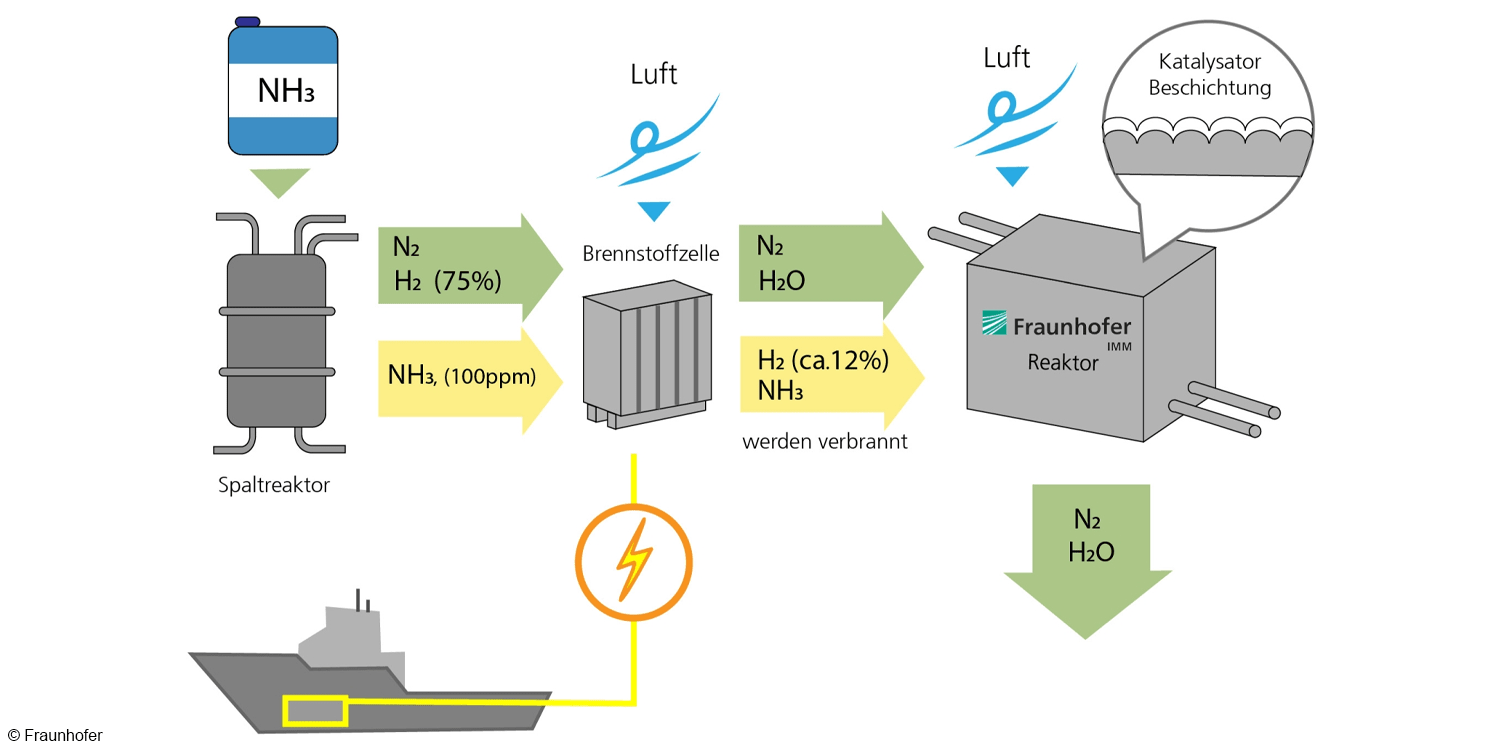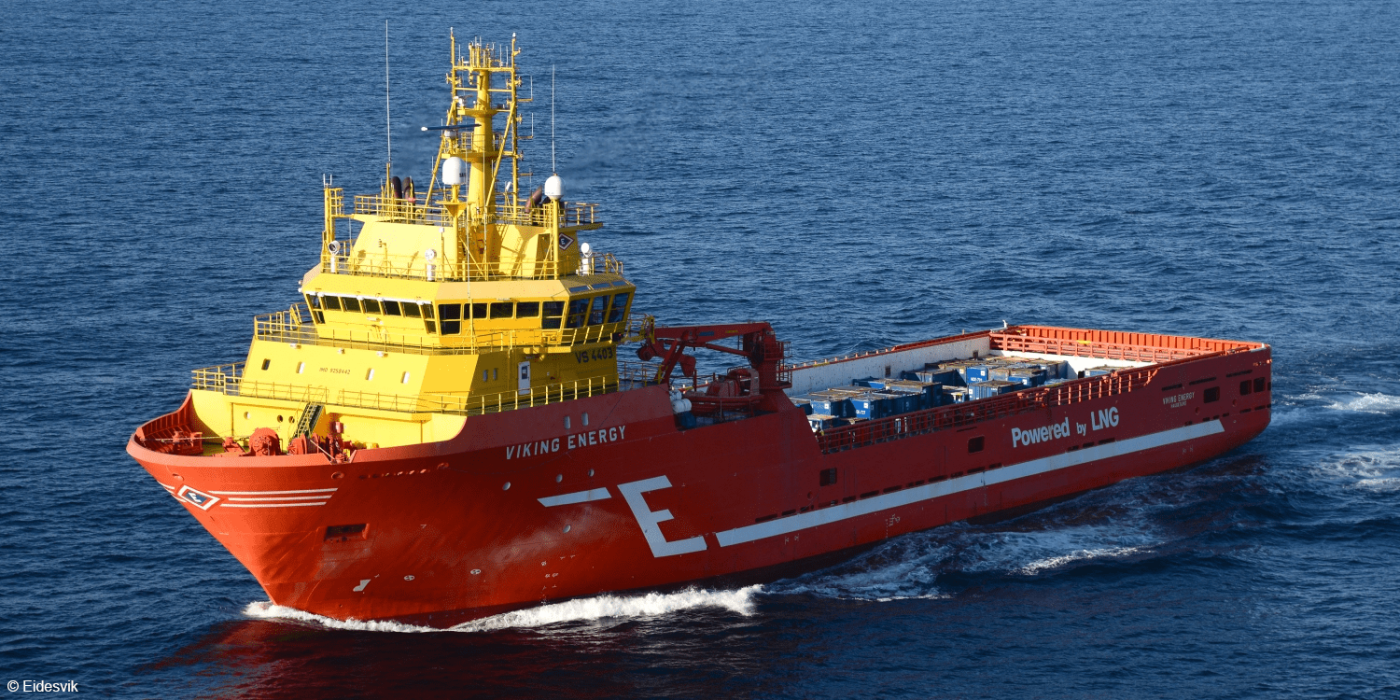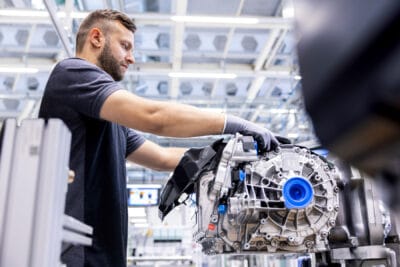Fraunhofer is working on fuel cell systems for ships
The Fraunhofer Institute is working with 13 European partners to develop the world’s first ammonia-based fuel cell for ships in the ShipFC project. Ammonia is mainly known for its use as a fertiliser, but is also suitable as a high-quality energy source, the institute says.
The Fraunhofer Institute for Microtechnology and Microsystems IMM in Mainz describes the approach as a promising further possibility within fuel cell technology. As a fuel for electric ship engines, ammonia is just as “green” as hydrogen, but less dangerous and easier to handle. Specifically, ammonia is split into nitrogen and hydrogen in the fission reactor. The latter burns in the fuel cell, generating electricity in the process. A catalyst, which the Fraunhofer researchers are responsible for developing, ensures that no harmful nitrogen oxides are produced. All that remains is water and nitrogen.
The team at the Fraunhofer Institute wants to complete an initial small prototype of the catalyst towards the end of 2021. By the end of 2022, a final-size prototype should be ready. In the second half of 2023, the first ship with the ammonia-based fuel cell should set sail: the supply ship Viking Energy of the Norwegian shipping company Eidesvik. After that, according to the Mainz-based company, other ship types such as cargo ships will be equipped with the propulsion technology.

The European Union is supporting ShipFC with 10 million euros. The project is coordinated by the organisation NCE Maritime CleanTech from Norway. According to Prof. Dr Gunther Kolb, Head of the Energy Division and Deputy Director of the Fraunhofer IMM, ammonia has some clear advantages over hydrogen: “Ammonia has significant advantages over hydrogen. Hydrogen has to be stored at -253 degrees Celsius as a liquid, or at pressures of around 700 bar as a gas. Liquid ammonia can be stored at a reasonable temperature of -33 degrees Celsius at standard pressure, and +20 degrees Celsius at 9 bar. That makes storing and transporting this energy carrier considerably easier and more straightforward.” In principle, however, he does not see ammonia as a direct competitor to hydrogen, but as an additional option in the spectrum of sustainable energies, says Kolb. “With its storage advantages, this environmentally friendly technology for power generation certainly has a role to play. Using it in ships is just the beginning.”





0 Comments